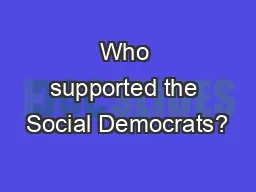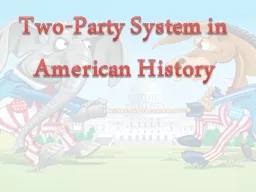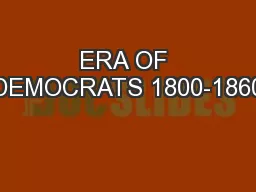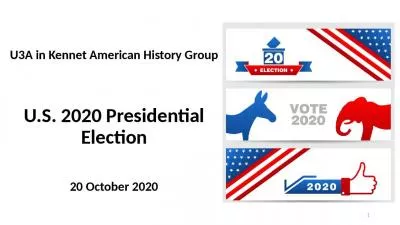PPT-ERA OF DEMOCRATS
Author : lois-ondreau | Published Date : 2016-07-18
18001860 THE ERA OF THE DEMOCRATS BEGAN WITH THOMAS JEFFERSONS ELECTION IN 1800 IT WAS THE BEGGINING OF DEMOCRATIC DOMINATION LASTING UNTIL THE CIVIL WAR MAJOR EVENTS
Presentation Embed Code
Download Presentation
Download Presentation The PPT/PDF document "ERA OF DEMOCRATS" is the property of its rightful owner. Permission is granted to download and print the materials on this website for personal, non-commercial use only, and to display it on your personal computer provided you do not modify the materials and that you retain all copyright notices contained in the materials. By downloading content from our website, you accept the terms of this agreement.
ERA OF DEMOCRATS: Transcript
Download Rules Of Document
"ERA OF DEMOCRATS"The content belongs to its owner. You may download and print it for personal use, without modification, and keep all copyright notices. By downloading, you agree to these terms.
Related Documents

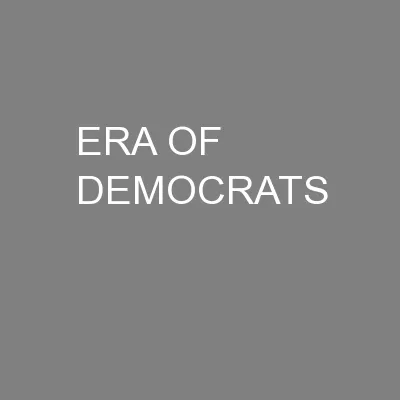
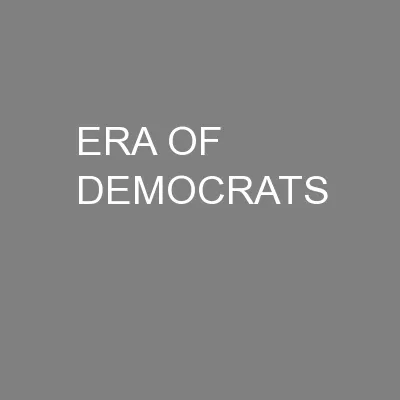
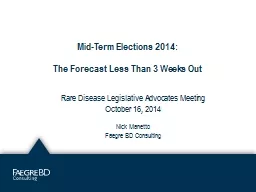
![[insert name of presenter]](https://thumbs.docslides.com/542597/insert-name-of-presenter-.jpg)

